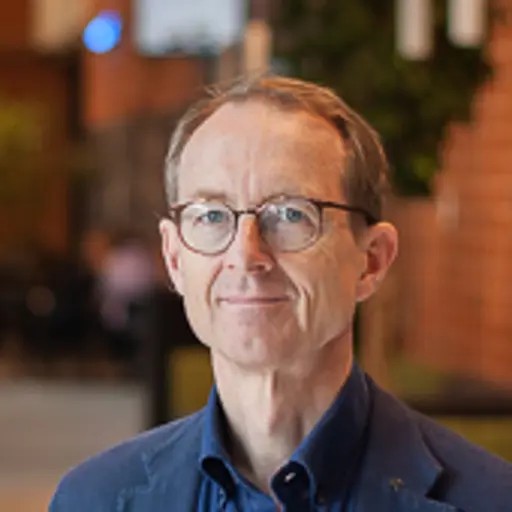A research group at Chalmers University of Technology presents the concept of foldable networks. The scientific paper, in which mechanics and chemistry meets, is of importance for how we understand and construct a new class of materials, so-called metal-organic frameworks and was recently published in Journal of the American Chemical Society.
We are used to solid materials behaving in a certain way. If you heat them, they expand, if you put them under pressure, they decrease slightly in volume, and if you pull an elastic material such as a rubber band, it becomes narrower. However, some materials with channels and voids at the molecular level have proved to be more complex. If you heat them, they can shrink in one or more directions, if you pull them, they can increase in volume, if you put pressure on them, they can expand. These properties are found, for example, in metal-organic frameworks that are built up, not as densely packed atoms and molecules, but as regular networks in three dimensions. These networks have nodes of metal ions linked by longer organic molecules.
The Chalmers study now shows that in some of these networks the nodes are linked in a unique way that allows them to collapse without affecting neither the geometry around the nodes, nor the links between them. In practice, this means that the material can change shape, volume and density without breaking or distorting the molecular components. A bit like a foldable bottle rack. The discovery is expected to be useful in different MOF areas such as harvesting of water from desert air, storage of hydrogen and biogas in renewable energy technology, catalysis and drug development.
"We found this group of networks when using a classic molecular-model construction kit, with plastic tubes and balls, solving the problem of how to join nodes with triangular geometry and hexagonal geometry to an infinitely repeating pattern in three dimensions." says Françoise Noa, PhD in chemistry at the Department of Chemistry and Chemical Engineering, Chalmers University of Technology.
"Then we simply discovered that the model we had built could be folded flat" continues Lars Öhrström, professor of inorganic chemistry at the Department of Chemistry and Chemical Engineering, Chalmers University of Technology, research leader of the study.
The researchers have also been able to identify several other such network topologies (the description of the pattern by which the various nodes are interconnected). These now become possible synthesis targets for new metal-organic framework compounds with unique properties, such as expanding when placed under gas pressure or increasing in volume of stretched in one direction but not in another.
Characterization of the new MOF materials that were also included in the study were a collaboration with researchers at the universities of Southern Denmark, Stockholm University and Uppsala University. The principal method used was single-crystal diffraction, using X-ray radiation to determine the exact atomic positions in a solid material. An indispensable way to study everything from proteins to drug molecules and materials. In addition, a mass spectrometry technique, ToF-SIMS, was used to look inside some of these framework crystals.
”A very nice study, beautiful MOFs and expert topological analysis. An enjoyable read!” comments Professor Neil Champness, well known researcher in metal-organic frameworks (MOFs) at the University of Nottingham, England, the research on twitter
More on the scientific paper
The article ”Metal–Organic Frameworks with Hexakis(4-carboxyphenyl)benzene: Extensions to Reticular Chemistry and Introducing Foldable Nets “ was published in Journal of the American Chemical Society
It is written by Francoise M. Amombo Noa, Erik Svensson Grape, Steffen M. Brülls, Ocean Cheung, Per Malmberg, A. Ken Inge, Christine J. McKenzie, Jerker Mårtensson, and Lars Öhrström
A 6 minute talk accompanying the article highlighting the most important points is found here: http://pubs.acs.org/doi/suppl/10.1021/jacs.0c02984
Facts: Crystallography – Single Crystal Diffraction
Single crystal diffraction is based on a deceptively simple equation that tells us about how X-ray light bounces between two planes, the Bragg equation. In this context, this simple formula gives rise to very complicated mathematics with links to, among other things, the abstract field of group theory. The solution of the equation in the form of precise atomic positions in a crystal also requires sophisticated coding, advanced X-ray detector materials and incredible precise mechanics in the many moving parts of the instrument.
Also a skilled crystallographer is essential, since traps lurk around every corner and the possibilities of taking a wrong turn are many, from the laborious work of selecting crystals under a microscope, to the last mathematical modelling in the computer.
The UN announced 2014 as the International Crystallography Year and more information is available on the international website https://www.iycr2014.org.
More reading
About storing hydrogen and biogas in metal-organic frameworks, Omar K Farha and co-workers in Science 2020.
”Balancing volumetric and gravimetric uptake in highly porous materials for clean energy”
On harvesting water from desert air using metal-organic frameworks, Omar Yaghi and co-workers in Nature Nanotechnology 2020.
”MOF water harvesters”
For more information, contact:
- Director of Graduate Studies, Chemistry and Chemical Engineering
